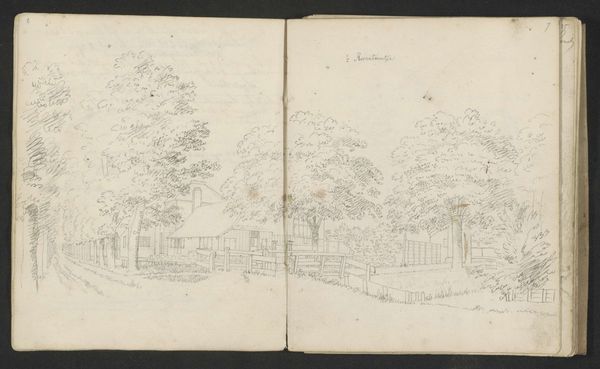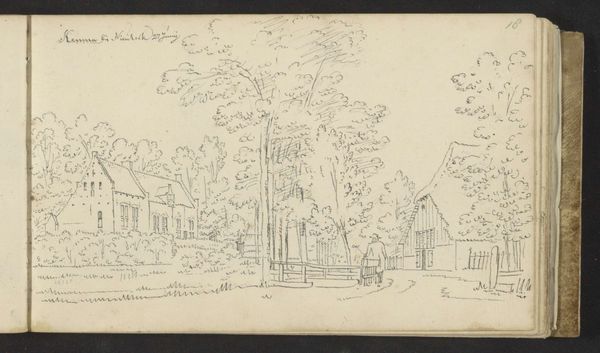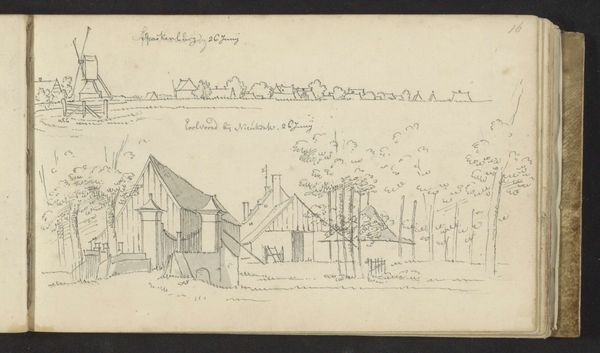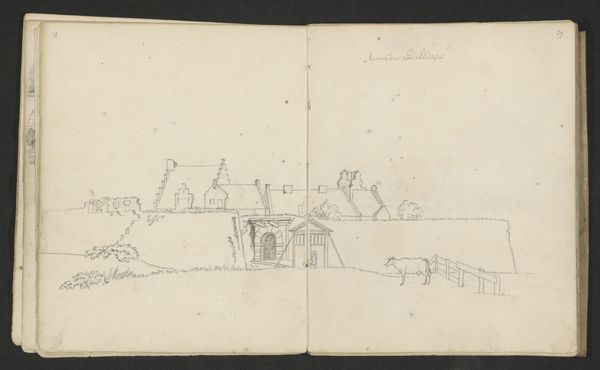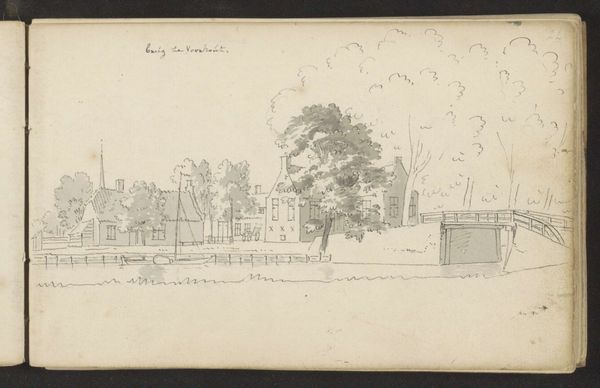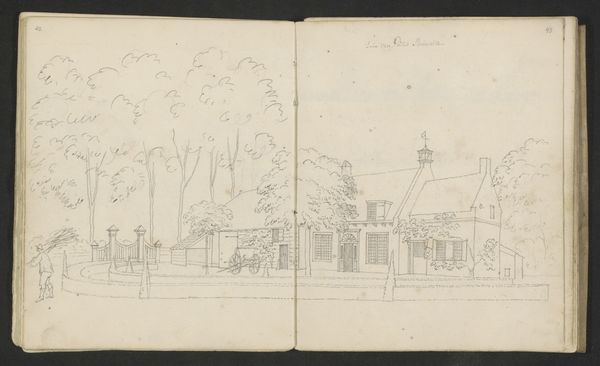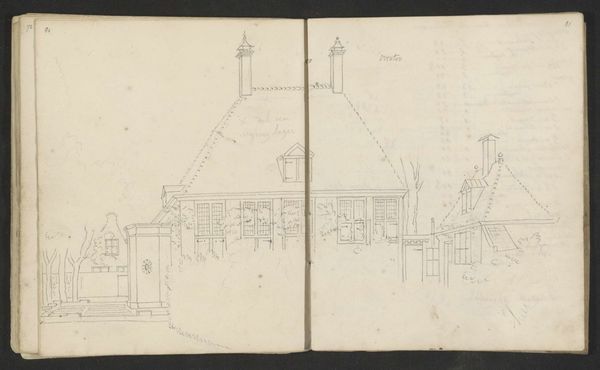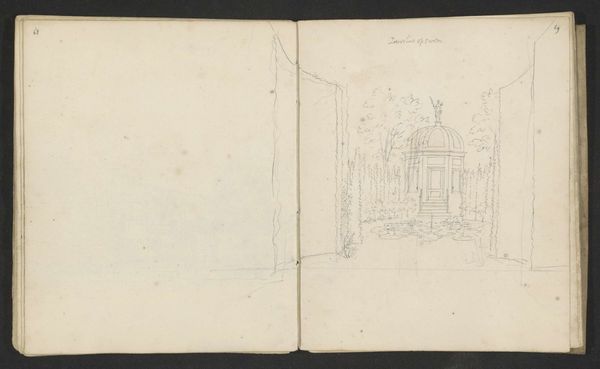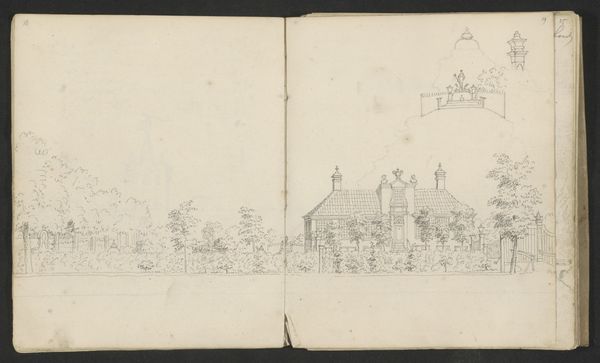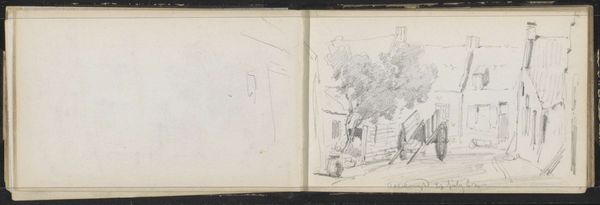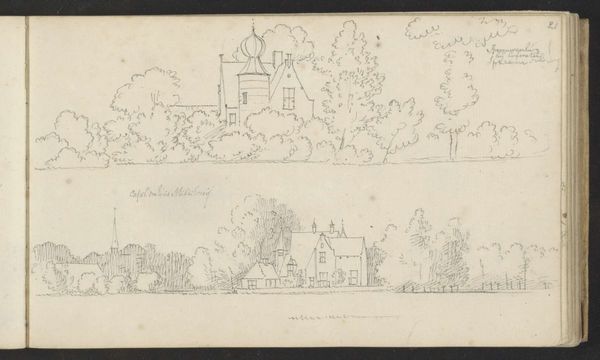
drawing, paper, pen, architecture
#
drawing
#
aged paper
#
sketch book
#
incomplete sketchy
#
hand drawn type
#
landscape
#
paper
#
personal sketchbook
#
hand-drawn typeface
#
pen-ink sketch
#
pen work
#
sketchbook drawing
#
pen
#
sketchbook art
#
architecture
Copyright: Rijks Museum: Open Domain
Editor: So, this is a pen and ink drawing called "Kasteel Staverden bij Ermelo" by Abraham de Haen the second, likely made sometime between 1732 and 1736. It's currently held at the Rijksmuseum. I'm struck by how informal it feels. It has this very intimate feeling, like a glimpse into the artist's personal sketchbook. What do you see in it? Curator: I see a powerful document reflecting the privileges of the Dutch Golden Age but also its inherent instability. De Haen's sketch depicts Staverden Castle, a site symbolic of power and aristocracy. However, rendered in a humble pen and ink sketch, there’s an implicit acknowledgement of the fragility of such institutions, especially as the Dutch Republic was starting to face challenges to its dominance in the 18th century. How does the artist's choice of medium – a simple pen and ink drawing – influence our perception of the castle and its socio-political context? Editor: That’s an interesting point. If it was a grand oil painting, it would communicate something very different. The informality strips away some of the grandeur and focuses on the basic structure. I wonder, did the Dutch Republic's citizens begin to question the prevailing hierarchies around them, which caused this shift toward simple, intimate art? Curator: Absolutely. There was growing social critique of wealth disparities, colonial exploits, and the ruling elite. Artists were starting to reflect these tensions. The sketchbook format suggests an individual grappling with these changes rather than a commissioned piece meant to glorify the elite. Editor: I hadn’t considered that. So, even a simple drawing of a castle can tell us a lot about societal shifts and anxieties during that period. Curator: Precisely. It prompts us to consider whose stories are told, and how those stories are mediated by artistic choices. Think about whose narrative this castle traditionally represented and how De Haan is subverting this through the quick sketch. Editor: I see what you mean! I initially viewed this as just a simple landscape, but now I see how it's so much more loaded than that. Curator: Exactly, art, at all times, can show both individual stories, and cultural perceptions about race, politics, gender, and social identities. Editor: Thank you, it helps me to remember this with the next artworks I view.
Comments
No comments
Be the first to comment and join the conversation on the ultimate creative platform.
